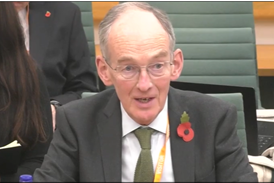The vast majority of law firms found professional indemnity insurance cover last October. Fortunately, the spectre of a large number of firms being forced to close involuntarily did not come to fruition and the Solicitors Regulation Authority was able to close the few firms that had entered the extended indemnity period (EIP) by the end of last year.
The capacity to enable that to happen had largely been filled by the two remaining unrated insurers following the demise of Balva and withdrawal of XL. But that capacity was very nearly lost to the market when the SRA, without prior warning, proposed a change to the participating insurers agreement to introduce a financial strength rating, but without considering from where or at what price new capacity would come, thus adding to fears of instability and forced closure.
At the end of April, the unrated insurer ERIC was declared insolvent, and a year on from Balva’s well-publicised difficulties, the Latvian authorities have yet to reach a decision on its solvency, leaving many of its former clients exposed to personal liability which threatens to follow them into retirement.
No sooner had the SRA changed its mind on insurer ratings, it then launched its consultation of radical PII reforms for implementation in October.
The enthusiasm on the part of our regulator to produce a vibrant and effective PII market is to be welcomed, but its approach needs to be more measured and consultative if these changes are to have the desired effects.
Work of the PII committee
These developments have only added to the workload of the PII committee, which has included:
- Lobbying the SRA to compile and publish comprehensive claims data.
- Addressing the barriers to new market entrants and increasing choice of cover, whether by way of revised mutual or initiatives such as Chancery Pii.
- Lobbying for the creation of the EIP and the abolition of the assigned risks pool (ARP), which insurers had cited as a disincentive to writing solicitors’ PII.
- Providing specialist expertise to Society members and the SRA.
- Producing PII practice notes and guidance through the Society’s Practice Advice Service.
- Lobbying the SRA over PII barriers to retirement and the extension of protection through post-six-year run-off cover.
- Compiling market data and feedback through the Society’s annual PII survey and lobbying on behalf of the Society’s 10,000+ member firms.
- Monitoring the work of the ARP.
- Reviewing the adequacy of compensation fund responses.
SRA proposal on PII reform
While the SRA’s decision to consult and reflect more widely on most of its PII proposals removes much of the uncertainty leading up to this year’s renewal, subject to the approval of the Legal Services Board, it intends to go ahead with reducing the compulsory minimum cover to £500,000.
This leaves very little time for firms to ensure they are purchasing sufficient cover to protect themselves and their clients, including Council of Mortgage Lenders members who may consider such a level of cover to be inadequate. The committee will be providing advice to firms on this change, and the chances of claims in excess of this sum being received, and reminding the profession that solicitors’ PII is written on a claims made, not a work-done basis.
We need to prepare for the next phase of SRA consultation, including costs of closure and retirement, and run-off cover. The SRA will shortly call for evidence on its proposal for an aggregate cap, reducing run-off cover to three years and exclusions from eligibility to claim on compulsory PII cover.
This more measured, evidence-based and outcomes-focused approach is welcome and the committee will offer its expertise and assistance. We will also be addressing perennial problems such as non-payment for run-off cover and the issue of misrepresentation of PII proposals. We will be approaching these on similar evidence-based principles.
The tightly drafted minimum terms and conditions safeguard client protection but can be abused and are of anecdotal concern to insurers. We have called on the SRA to provide data collated from insurers and from complaints received by the SRA, so as to quantify the extent of these concerns and the extent to which potential redress such as disciplinary process, debt recovery actions or claims for unfair prejudice have been exhausted and found wanting.
Are simple remedies available but not being used? Only if the facts on such issues are available can a sensible decision be made. There needs to be full analysis and impact assessment, and prior and proper consultation – not just six weeks – before changes are implemented.
While we await more details of the next stages of the reform process, I hope the scope will be sufficiently broad to allow for a holistic debate among the profession of the kind of client financial protection regime we want.
This needs to encompass the compensation fund, since there is no point seeing changes and savings in PII only to find claims being met in that way.
The profession must decide whether it wants to maintain the covenant of trust – comprehensive cover for negligence claims – that has existed since 1987, or whether it wishes to move to a new regime of less comprehensive cover to compete with new providers of ‘legal services’.
This is a big question and the answer cannot be rushed through via a series of inadequate and truncated consultations.
Alan Radford is chair of the Law Society’s PII committee



























No comments yet